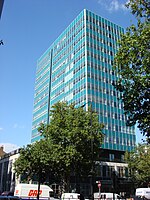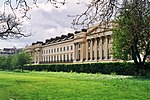The Baker Street robbery was the burglary of safety deposit boxes at the Baker Street branch of Lloyds Bank in London, on the night of 11 September 1971. A gang tunnelled 40 feet (12 m) from a rented shop two doors away to come up through the floor of the vault. The value of the property stolen is unknown, but is likely to have been between £1.25 and £3 million; only £231,000 was recovered by the police.The burglary was planned by Anthony Gavin, a career criminal, who was inspired by "The Red-Headed League", a short story by Arthur Conan Doyle in which Sherlock Holmes waits in a bank vault to arrest a gang who have tunnelled in through the floor. Gavin and his colleagues rented Le Sac, a leather goods shop two doors from the bank, and tunnelled during weekends. The interior of the vault was mapped out by one gang member using an umbrella and the span of his arms to measure the dimensions and location of the furniture. The gang initially tried to use a jack to force a hole in the vault floor and when this failed they used a thermal lance. When this also failed to work, they used gelignite to blast a way through. Once inside, they emptied 268 safety deposit boxes. The gang had posted a lookout on a nearby roof, who was in contact via walkie-talkie, and their broadcasts were accidentally overheard by Robert Rowlands, an amateur radio enthusiast. He called the police, who initially did not take him seriously, so he used a small cassette recorder to make a recording of the burglars' conversations. The second time he contacted the police they accepted what he was saying, and began hunting for the burglars while the break-in was in progress. They searched 750 banks in an 8-mile (13 km) radius, but failed to locate the gang.
Police found the members of the gang soon after the break-in; one of the burglars, Benjamin Wolfe, had signed the lease for Le Sac in his own name and informers provided information that led to Gavin. At the end of October 1971 police arrested Wolfe, Gavin, Reg Tucker and Thomas Stephens. They continued to search for other members of the gang, including one woman, for five years, but no further arrests were made. Gavin, Tucker and Stephens were sentenced to twelve years in prison; Wolfe received a sentence of eight years, less than the others as he was in his 60s.
There have been several rumours connected with the burglary, including one that the government issued a D-Notice to censor the press; that one of the safety deposit boxes contained compromising photographs of Princess Margaret and the actor and criminal John Bindon; and that photographs of a Conservative cabinet minister abusing children were found. There is no evidence to support these claims and they have been widely dismissed. Some of the rumours inspired the story for the 2008 film The Bank Job. Many of the papers relating to the burglary remain under embargo at The National Archives until January 2071.











